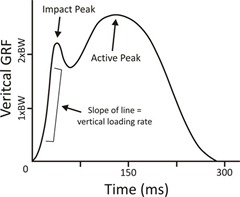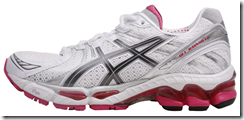 Image by al.herrmann via Flickr
Image by al.herrmann via FlickrI recently responded to an e-mail questionnaire from a reporter at a major media outlet regarding Daniel Lieberman’s recent paper on barefoot running that was published in Nature. I ultimately was not quoted in the article, so I thought I’d share my responses to her questions here. I have since read the Lieberman paper in its entirety, and hope to put together a more thorough summary in the next week or so.
Here are the reporter’s questions and my answers:
1. Did you learn anything new from the study that you’ll apply to your running?
I’m still waiting for our Department’s edition of Nature to arrive (I teach anatomy at a small college – Saint Anselm College in Manchester, NH), but am very familiar with Dr. Lieberman’s work and have read through the entire Harvard companion website to the article. In fact, I just gave a lecture on his past research regarding the evolution of distance running in humans in my Exercise Physiology class a few weeks ago. The audio of my lecture is available on-line: https://runblogger.com/
In reading the abstract of the Nature article, as well as the companion website published by Harvard, I think that the major contribution of Lieberman’s paper is that it provides additional scientific evidence to confirm some of the ideas published previously in popular books like Christopher McDougall’s Born to Run, and Bernd Heinrich’s Why We Run. Namely, it shows that our running gait is highly sensitive to what we do, or do not, put on our feet. In particular, there is a lot of interest right now in the running community about how footstrike patterns relate to running performance, and how running barefoot or in a minimalist shoe like the Vibram Fivefingers might help a given runner transition to a more midfoot or forefoot type of gait. As an evolutionary anatomist myself, I appreciate the care that Lieberman has taken to explain the rationale for his hypothesis that humans have evolved to be distance runners, and that is one of the things I like best about his recent work.
I’ve read a lot of the literature on running biomechanics, and other studies have documented similar changes in footstrike among barefoot runners. Lieberman’s study adds data by really looking at those who have grown up habitually running barefoot, and showing that they tend to be forefoot strikers. This is presumably the pattern exhibited by our ancestors, who obviously didn’t run in cushioned shoes.
2. This is going to be different for everyone considering biomechanics are different in each case — but what has your experience with barefoot running been and if it wasn’t positive, did this study inspire you to return to the idea but use a different approach?
What Lieberman’s study does for me is to add an additional piece of data to support an approach I have already taken with my running. Over the past year, I have transitioned myself to a more minimalist style of running, and I generally try to wear as light a shoe as possible when I run (usually less than 10oz each). Although I have not run barefoot (aside from wearing socks on a treadmill from time to time), I run at least once a week in Vibram Fivefingers KSO’s as a way of strengthening my feet and legs. Anyone who has tried running barefoot or in Vibrams can attest to the fact that they are excellent tools for this purpose, and I can tell that my footstrike changes when I wear them (I mildly heel-strike in most running shoes, land on the midfoot in Vibrams – I’ve actually shot slow-motion video in my lab to confirm this: https://runblogger.com/
I’ll also add that I’m a moderate when it comes to minimalist running. I wear running shoes regularly (I’m a sponsored runner for Brooks Running via my membership in the Brooks ID program), and I think that the cushioning that shoes provide is important in long distance races (e.g., marathons), as well as for heavier runners and those who might have physical issues with their feet. That being said, the shoes I do are lightweight and generally not of the supportive variety, and I view running in shoes like the Vibrams to be an essential part of my training.
![Reblog this post [with Zemanta]](https://img.zemanta.com/reblog_e.png?x-id=1c208943-bc07-429d-93f1-90f2071ff7a0)

















Speak Your Mind